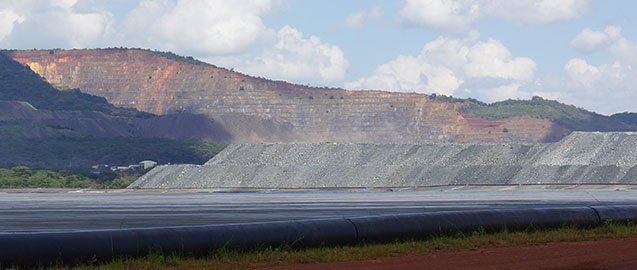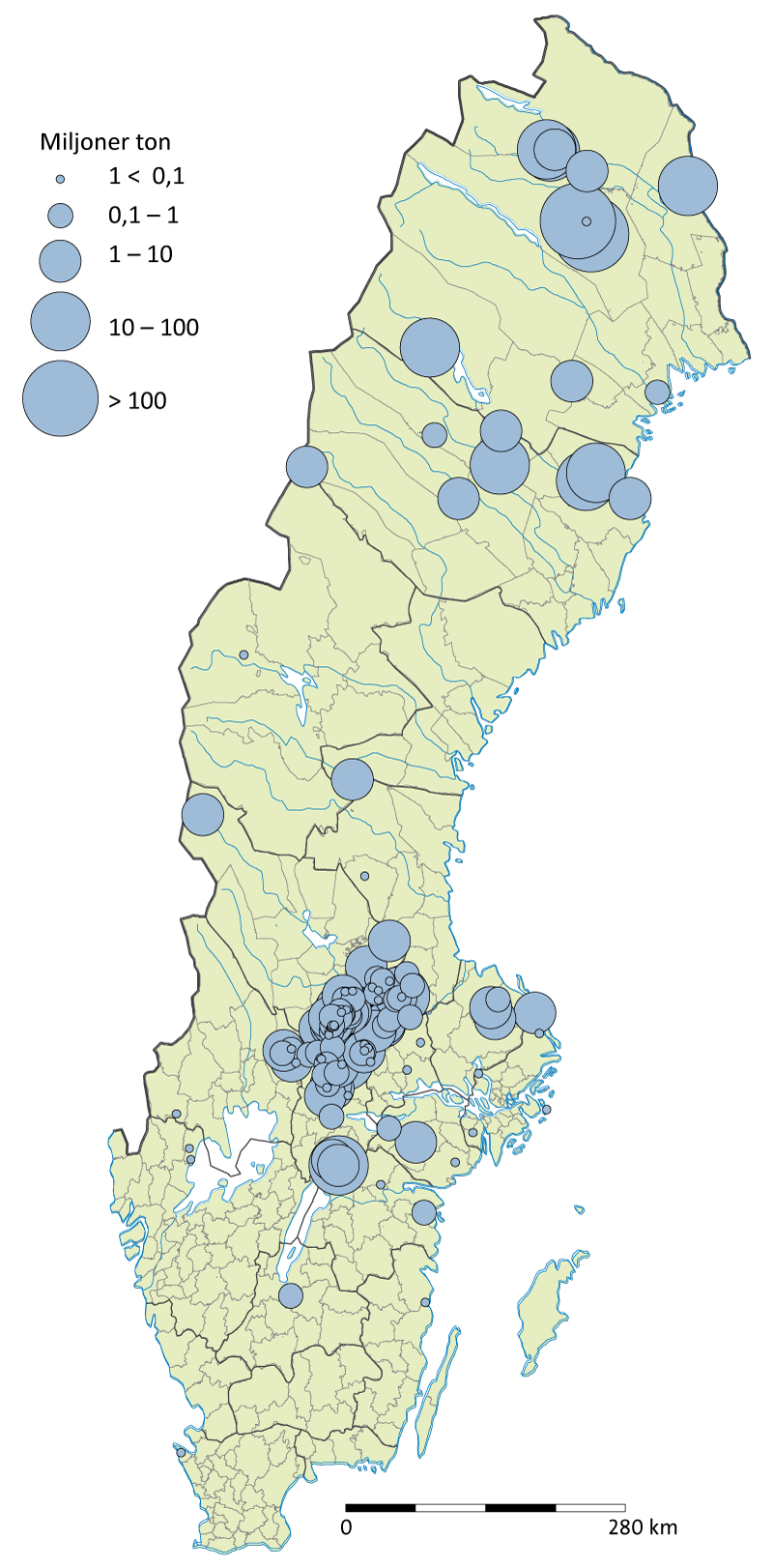
Photo: Pontus Westrin/SGU
Waste rocks management
Waste rocks are rocks that are mined to access the ore. Having a waste rock management plan is important to limit mining effects on nature and the environment.
Waste rocks are rocks that are not ‘ore’ (the mineable part of the rock that is financially viable) in a mine. Waste rocks is also referred to as wall-rock ( sidoberg or warp). In both open pit mines and underground mines, it is necessary to mine some waste rocks to access the ore deposit.
The volume of waste rocks that needs to be mined often depends on the shape and the geometry, of ore deposits that are being mined. A complex or problematic geometry can mean that a significant amount of waste rock needs to be mined to access the ore deposits possible. A simple geometry, on the other hand, can simplify mineral processing and potentially reduce the amount of waste rock to be mined. The location and geology of ore deposits also play a significant role. Accurate surveys of the geology of ore deposits and development of 3-D models of the deposit, may help the mining operator to reduce the amount of waste rock that need to be mined.
The chemical composition of waste rock differs from the ore. To find out what waste rocks contains and whether it is harmful, waste rock must be characterized. Characterization means that waste rock is thoroughly analyzed for what it contains and how it behaves over time. It is very common that there are several different types of waste rocks in the same ore deposit.
In some cases, waste rock may contain minerals that are harmful to the environment, such as sulphide minerals. In such case, waste rock needs to be handled properly and mine site remediation needs to occur immediately after mining so as to minimize potential harm to the environment. Quite often, waste rocks are piled up or redeposited in open pits and then covered by layers of soil or with water.
Last reviewed 2022-06-17

